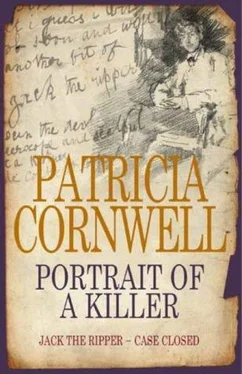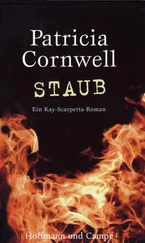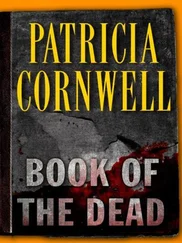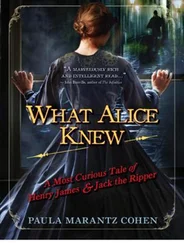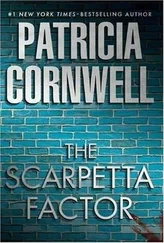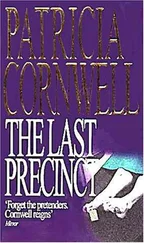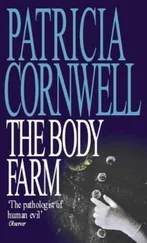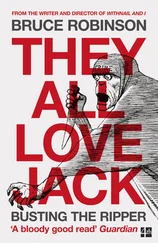Patricia Cornwell - Portrait Of A Killer - Jack The Ripper - Case Closed
Здесь есть возможность читать онлайн «Patricia Cornwell - Portrait Of A Killer - Jack The Ripper - Case Closed» весь текст электронной книги совершенно бесплатно (целиком полную версию без сокращений). В некоторых случаях можно слушать аудио, скачать через торрент в формате fb2 и присутствует краткое содержание. Жанр: Триллер, на английском языке. Описание произведения, (предисловие) а так же отзывы посетителей доступны на портале библиотеки ЛибКат.
- Название:Portrait Of A Killer: Jack The Ripper - Case Closed
- Автор:
- Жанр:
- Год:неизвестен
- ISBN:нет данных
- Рейтинг книги:5 / 5. Голосов: 1
-
Избранное:Добавить в избранное
- Отзывы:
-
Ваша оценка:
- 100
- 1
- 2
- 3
- 4
- 5
Portrait Of A Killer: Jack The Ripper - Case Closed: краткое содержание, описание и аннотация
Предлагаем к чтению аннотацию, описание, краткое содержание или предисловие (зависит от того, что написал сам автор книги «Portrait Of A Killer: Jack The Ripper - Case Closed»). Если вы не нашли необходимую информацию о книге — напишите в комментариях, мы постараемся отыскать её.
Portrait Of A Killer: Jack The Ripper - Case Closed — читать онлайн бесплатно полную книгу (весь текст) целиком
Ниже представлен текст книги, разбитый по страницам. Система сохранения места последней прочитанной страницы, позволяет с удобством читать онлайн бесплатно книгу «Portrait Of A Killer: Jack The Ripper - Case Closed», без необходимости каждый раз заново искать на чём Вы остановились. Поставьте закладку, и сможете в любой момент перейти на страницу, на которой закончили чтение.
Интервал:
Закладка:
"Go to number 13 and try and get some rent," he told his assistant, Thomas Bowyer. It was close to eleven when Bowyer walked over to Mary Kelly's room and knocked on the door. He got no response. He tugged on the handle, but the door was locked. He pushed the curtains aside and looked through the broken window and saw Mary Kelly naked on the bed, covered with blood. He ran back to his employer, and both he and McCarthy hurried to Mary's room and looked in. Bowyer ran to find the police.
An H Division inspector made haste to get to the scene, and he sent immediately for Police Surgeon Dr. George Phillips and wired Scotland Yard about the latest Ripper murder. Within half an hour, the crime scene was crowded with inspectors, including Frederick Abberline, who ordered that no one in the courtyard was allowed to leave, and no one could enter without police authorization.
Charles Warren was also telegraphed. Abberline inquired if the commissioner would like the bloodhounds to respond. The seasoned investigator probably knew full well what a waste of time that would be. But he was following orders. The order was countermanded and the dogs never came. By the end of the day, the press would learn that Warren had resigned.
There was no rush to get inside Mary Kelly's room. As Dr. Phillips said in the inquest, he looked through "the lower broken pane and satisfied myself that the mutilated corpse lying on the bed was not in need of any immediate attention from me." The police removed a window from Mary Kelly's room and Dr. Phillips began to take photographs through the opening. At 1:30 P.M., police used a pickaxe to pry open the door, and it banged against a table left of the bedstead. Police investigators and Dr. Phillips entered the room and what they saw was unlike any travesty the men had ever encountered in their entire careers.
"It looked more like the work of a devil than a man," McCarthy would later recount at the inquest. "I had heard about the Whitechapel murders but I swear to God I had never expected to see such a sight as this."
Mary Kelly's body was two-thirds of the way across the bed, almost against the door. Crime-scene photographs reveal remains so mutilated that she may as well have been run over by a train. The Ripper hacked off her ears and nose and slashed and defleshed her face down to the skull. She had no features left, only her dark hair, still neatly styled, probably because she never struggled with the Ripper. There wasn't room to attack her from behind the bed, so he attacked her from the front. Unlike the Camden Town murder, Mary was face-up when a strong, sharp blade severed her right carotid artery. Blood soaked through the bed and pooled on the floor.
Abberline, who was in charge of the case, searched the room. He found burned clothing in the fireplace and surmised that the killer continued to feed the fire while he worked so he would have enough light to see, "as there was only one piece of candle in the room," Abberline testified. The heat was so intense that it melted the spout of a kettle. One might wonder how a fire could burn so brightly and not have been noticed in the courtyard, even through drawn curtains. Someone might have worried that the room was on fire, unless the fire was a low, hot, steady one. As usual, people were minding their own affairs. Maybe the Ripper worked by the tiny light of the single candle in the room. Sickert didn't mind the dark. The "pitch dark," he said in a letter, "is lovely."
Except for a coat, all of Maria's dirty laundry had been burned. Mary Kelly's clothing was found neatly folded by the side of the bed, as if she had willingly undressed down to her chemise. Her killer ripped and cut and hacked into her body, laying it wide open, mutilating her genitalia to a pulp. He amputated her breasts and arranged them next to her liver on the side of the bed. He heaped her entrails on top of the bedside table. Every organ except her brain was removed, and her right leg was flayed open to the knee, exposing a completely defleshed, gleaming white femur.
Plainly visible on the left arm are curved cutting injuries, and a dark line encircling her right leg just below the knee suggests the Ripper may have been in the process of dismemberment when, for some reason, he stopped. Perhaps the fire had burned down or the candle was about to go out. Maybe it was getting late and time for him to make his escape. Dr. Thomas Bond arrived at the scene at 2:00 P.M., and in his report he said that rigor mortis had set in and increased during the course of his examination. He admitted he could not give an exact time of death, but the body was cold at 2:00 P.M. Based on that, and on rigor mortis and the presence of partially digested food in her ripped-open stomach and scattered over her intestines, he estimated she had been dead twelve hours by the time he reached the scene.
If Dr. Bond was correct in saying that rigor mortis was still in the process of forming when he began to examine the body at the scene by 2:00 P.M., then it is possible that Mary had not been dead as long as twelve hours. Her body would have been cold long before that. It was drained of blood, she was slender, her body cavity was exposed, and she was covered by nothing but a chemise in a room in which the fire had gone out. Also, if witnesses are to be believed, Mary Kelly was still alive at 1:30. Times given to police and at the inquest were based on area church clocks that rang the half hour and the hour, on changes of light, and when the East End was silent or beginning to stir.
It may be that the most reliable witness to time of death in Mary Kelly's murder is the kitten that began walking over Elizabeth Prater at around 4:00 A.M. Cats have extraordinarily good hearing and the kitten may have been disturbed by sounds directly below. It may have sensed the pheromones secreted by people who are terrified and panicking. About the time the kitten woke up Elizabeth, she said she heard from nearby someone cry, "Murder!"
Mary Kelly would have seen what was coming. She was undressed and on the bed. She was face-up. She might have seen him pull out the knife. Even if the Ripper threw a sheet over her face before cutting her throat, she knew she was about to die. She would have lived for minutes as she hemorrhaged and he began slashing her. We can't assume the Ripper's victims felt no pain and were already unconscious when he began mutilating them. It isn't possible to know in Mary Kelly's case if the Ripper started on her belly or her face.
If the Ripper hated Mary Kelly's sexually alluring, pretty face, he might have started there. Or it may have been her abdomen. She may have felt the cuts as the loss of blood quickly caused her to shiver. Her teeth might have begun to chatter, but not for long as she grew faint, went into shock, and died. She may have drowned as blood gushing out of her carotid artery was inhaled through the cut in her windpipe and filled her lungs.
"The air passage was cut through at the lower part of the larynx through the cricoid cartilage," reads page 16 of the original autopsy report.
She could not have screamed or uttered a sound.
"Both breasts were removed by more or less circular incisions, the muscles down to the ribs being attached to the breasts."
This would require a sharp, strong knife with a blade that was not so long as to make the weapon unwieldy. A dissecting knife has a four- to six-inch blade and a handle with a good grip. But a common killing knife available to the Ripper would have been the kukri, with its unique blade that sweeps into a forward bend. The blade lengths can vary, and the knives are sturdy enough for chopping vines, branches, or even small trees. When Queen Victoria was the Empress of India, many British soldiers wore kukris, and the knives would have found their way into the English market.
Jack the Ripper wrote in a letter dated October 19th that he "felt rather down hearted over my knife which I lost comming [sic] here must get one tonight." Two days later, on the Sunday night of October 21st, a constable discovered a bloody knife in the shrubbery not far from where Sickert's mother lived. The knife was a kukri. Such a knife could have been used on Mary Kelly. The kukri was used in battle to cut throats and sever limbs, but because of its curved blade, it is not a stabbing knife.
Читать дальшеИнтервал:
Закладка:
Похожие книги на «Portrait Of A Killer: Jack The Ripper - Case Closed»
Представляем Вашему вниманию похожие книги на «Portrait Of A Killer: Jack The Ripper - Case Closed» списком для выбора. Мы отобрали схожую по названию и смыслу литературу в надежде предоставить читателям больше вариантов отыскать новые, интересные, ещё непрочитанные произведения.
Обсуждение, отзывы о книге «Portrait Of A Killer: Jack The Ripper - Case Closed» и просто собственные мнения читателей. Оставьте ваши комментарии, напишите, что Вы думаете о произведении, его смысле или главных героях. Укажите что конкретно понравилось, а что нет, и почему Вы так считаете.
